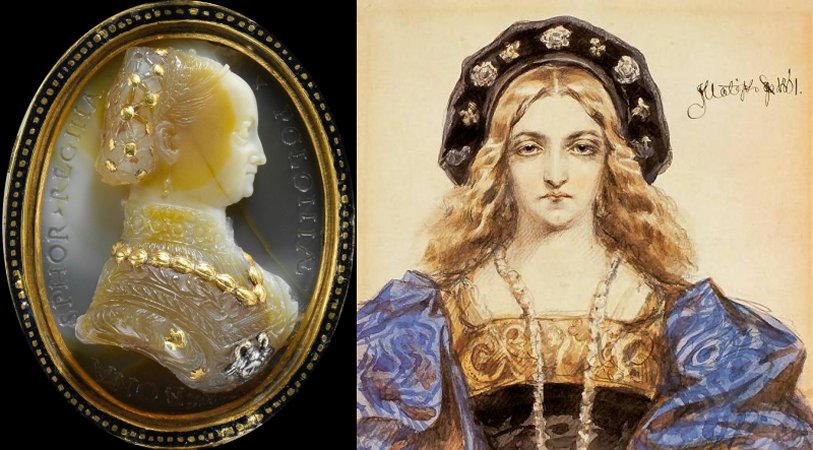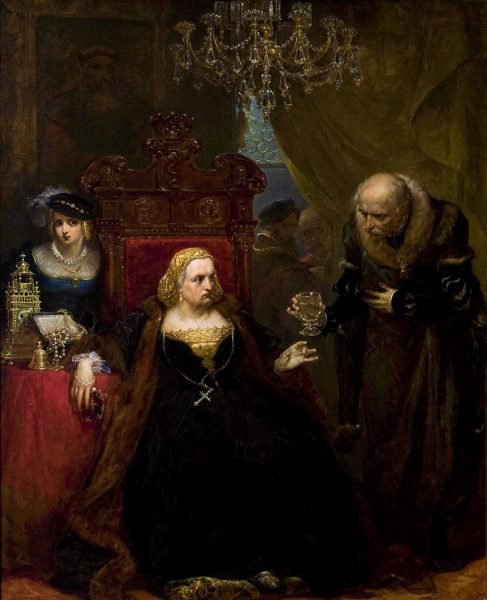Bona Sforza – Ambitious Queen Of Poland Was Betrayed And Murdered
Ellen Lloyd - AncientPages.com - It was said that she had a nasty habit of interfering with everything. She was outspoken, full of energy, and hot-tempered. Bona Sforza has gone to the history books as an admired but also criticized woman who was cunning and intelligent, and there is no doubt that her strong personality gave her supporters as well as enemies.
Cameo with bust of Bona Sforza, circa 1540. Credit: Public Domain. Right: Drawing of Bona Sforza. Credit: yourcracow. pl
Personal tragedies followed in her footsteps. Her desire to gain power and wealth was why her life ended in disaster. Those she trusted were also those who betrayed her.
Early Years Of Queen Bona Sforza
Bona Sforza was an Italian woman who became Queen of Poland through her marriage to Sigismund I. Since Sigismund I was also Grand Duke of Lithuania, Bona Sforza gained an extra title and became Grand Duchess of Lithuania. However, her way to the throne was long, and she had to overcome many obstacles before enjoying wealth and power.
Bona was born in 1494 in Milan, Italy. She was the daughter of Duke Gian Galeazzo Sforza and Dutchess Isabella of Naples. Such influential parents seemed ideal for a child-like Bona, but fate decided against her. According to rumors, her father was poisoned the same year Bona was born. She had to move with her mother, brother, and sisters to Sforza Castle in Milan, where they lived under the protection of Ludovico il Moro, Bona's father's uncle.
Ludovico il Moro was no real friend of the family. Living under his protection was more like spending time in prison, and he was constantly afraid Milan residents would rebel and install Francesco Sforza, the favored son of Gian Galeazzo. To be on the safe side, Ludovico il Moro separated Bona's brother from the family and sent him away.
King Sigismund I of Poland. Credit: Marcello Bacciarelli, Wikipedia
Things didn't go quite as Ludovico il Moro planned because the Italian War broke out in 1499. King Louis XII of France deposed Ludovico il Moro and took Gian Galeazzo to Paris.
Bona's Marriage To Polish King Sigismund I The Old
Now, Bona's mother felt there was a need to leave Milan, and she took Bona to the Castello Normanno-Svevo in Bari, where they made a home for themselves. Bona started her education, but her mother, Isabella, was restless and frustrated. All her children had died, and Bona was the only one she had left.
Isabella was determined to find a suitable candidate who could marry her daughter. It should be an ideal man who could give her money and power. There were several marriage proposals, and finally, Bona's old teacher, Crisostomo Colonna, convinced the widowed Polish King Sigismund I the Old to marry Isabella's daughter.
The wedding took place on April 15, 1518, just outside Kraków, Poland. At the time, King Sigismund I 's marriage was 51 years old, and Bona was 24 years old. The age difference was not the only reason the couple was not a perfect match. The Polish King was calm and valued comfort, while Bona was a woman full of energy who loved the entertainment.
Queen Bona's gardens at the Wawel Castle. Credit: Wikipedia, CC BY 2.5
A hunting accident led to a tragedy that affected the lives of her entire family. In 1527, while being pregnant, she was attacked by a bear she was chasing. Bona fell off her horse and lost her unborn child. Later, she became pregnant and gave birth to a boy named Olbracht, who died on the same day.
Bona Sforza Was A Queen Who Had Many Opinions And Forced The Polish King To Do What She Wanted
As Queen of Poland, Bona Sforza was involved in various state affairs from the beginning. It was by no means unusual that she and King Sigismund I disagreed. Still, in the end, Bona always decided how they would proceed. She "forced" her husband to accept her ideas and decisions. She could shout, cry, or use another persuasive method to get what she wanted.
Of course, Bona was no bad wife either. She cared for and nursed her husband when he was sick, but she was ambitious, intelligent, and well-educated. Bona was familiar with several foreign languages and knew politics, history, mathematics, geography, and theology.
Bona was not a queen who would sit on the throne doing nothing. She wanted to gain absolute power and become a person of actual influence. The Queen of Poland was a fierce opponent of the House of Habsburg, also called the House of Austria. Her opinion was that her country should instead seek a closer alliance with the Kingdom of France.
Poisoning of Queen Bona painted by Jan Matejko, 1859. Credit: Public Domain
Bona had a good relationship with Pope Leo X, who granted her the privilege of awarding benefices in several Polish cathedrals. This privilege gave her the perfect opportunity to secure the support of various officials. Three of her most trusted supporters, Piotr Kmita Sobienski, Andrzej Krzycki, and Piotr Gamrat, were sometimes known as the Triumvirate.
Bona Sforza was not a Polish woman by birth, but she loved Poland and wanted the best for the country. One of her goals was strengthening the royal dynasty's position in Poland.
Bona paid little attention to her three daughters, who we today know as Sophia, Duchess of Brunswick-Lüneburg, Anna I of Poland, and Catherine, Queen of Sweden. Their great and powerful mother completely overshadowed them.
Queen Bona Sforza was much more interested in the well-being and political success of her son, Sigismund II Augustus of Poland.
Bona even pressured her husband to crown their 10-year-old son while King Sigismund I was still alive. Of course, King Sigismund I, who was under pressure, agreed to his wife's wishes. It was a very unusual crowning, but Bona wanted to be sure no one questioned her son's future authority as ruler when her husband passed away.
Betrayal By One Of Her Own Led To Her Death
The queen's situation changed when King Sigismund I died on April 1, 1548. Bona moved to Masovia in Poland, where she stayed for eight years. Bona's contact with her son Sigismund II Augustus of Poland could have been better, and she was very disappointed in him. Bona disliked his marriage to Elisabeth Habsburg. When Elizabeth died, King Sigismund II Augustus married Barbara Radziwill, whom Bona disliked. When Barbara died of cancer, there were rumors the Polish King's wife had been poisoned by his mother. There is no evidence, but this event led to Bona's decision to leave Poland and move back to Bari.
Queen Bona Sforza's ending was somewhat controversial. On November 19, 1557, she was poisoned by her trusted officer, Gian Lorenzo Pappacoda. Pappacoda acted on behalf of King Philip II of Spain, who was unwilling to pay back an enormous debt to Bona.
The outspoken Polish Queen, famous for having an opinion about almost everything, was buried in St. Nicholas' Basilica in Bari.
Written by Ellen Lloyd – AncientPages.com
Updated on February 2, 2024
Copyright © AncientPages.com All rights reserved. This material may not be published, broadcast, rewritten or redistributed in whole or part without the express written permission of AncientPages.com
Expand for referencesBogucka M. - Bona Sforza
British Museum. Dept. of Manuscripts - Miniatures and Borders From the Book of Hours of Bona Sforza, Duchess of Milan, in the British Museum
More From Ancient Pages
-
 Elongated Skulls: Did Intentional And Intriguing Ancient Tradition Originate In China?
Archaeology | Jul 5, 2019
Elongated Skulls: Did Intentional And Intriguing Ancient Tradition Originate In China?
Archaeology | Jul 5, 2019 -
 Ancient DNA Extracted From A 2,900-Year-Old Clay Brick – Unique Time Capsule Of Plant Life
DNA | Aug 23, 2023
Ancient DNA Extracted From A 2,900-Year-Old Clay Brick – Unique Time Capsule Of Plant Life
DNA | Aug 23, 2023 -
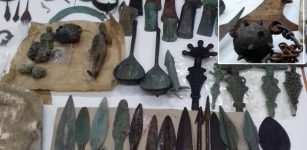 Illegal Journey Of 2,000 Historic Artifacts Hidden In Truck Under The Guise Of Parquet
Artifacts | Jan 3, 2021
Illegal Journey Of 2,000 Historic Artifacts Hidden In Truck Under The Guise Of Parquet
Artifacts | Jan 3, 2021 -
 Ancient Burial Of A Princess Who Fell Off A Cliff Raises Many Questions
Archaeology | Apr 18, 2019
Ancient Burial Of A Princess Who Fell Off A Cliff Raises Many Questions
Archaeology | Apr 18, 2019 -
 Mesopotamian People Liked To Drink Beer Using Variety Of Drinking Vessels
Archaeology | Jun 28, 2018
Mesopotamian People Liked To Drink Beer Using Variety Of Drinking Vessels
Archaeology | Jun 28, 2018 -
 No Evidence Ancient Caribbeans Were Cannibals – Scientists Say
Archaeology | Aug 23, 2021
No Evidence Ancient Caribbeans Were Cannibals – Scientists Say
Archaeology | Aug 23, 2021 -
 3,000-Year-Old Bakery With Large Amounts Of Flour Discovered In Armenia
Archaeology | Jul 3, 2023
3,000-Year-Old Bakery With Large Amounts Of Flour Discovered In Armenia
Archaeology | Jul 3, 2023 -
 Unique Statue Of Warrior Wearing A Phrygian Cap Accidently Discovered By Dutch Fishermen
Archaeology | Aug 2, 2022
Unique Statue Of Warrior Wearing A Phrygian Cap Accidently Discovered By Dutch Fishermen
Archaeology | Aug 2, 2022 -
 Archaeologists Highlight The Tartessos Culture’s Sustainable Construction Skills
Archaeology | Oct 4, 2024
Archaeologists Highlight The Tartessos Culture’s Sustainable Construction Skills
Archaeology | Oct 4, 2024 -
 Vatican Secrets – Dangerous Knowledge And Invention That Could Alter History
Ancient Mysteries | Dec 14, 2018
Vatican Secrets – Dangerous Knowledge And Invention That Could Alter History
Ancient Mysteries | Dec 14, 2018 -
 Darabgerd: One Of The Oldest Cities Dated To Achaemenid Era
Featured Stories | Jan 28, 2021
Darabgerd: One Of The Oldest Cities Dated To Achaemenid Era
Featured Stories | Jan 28, 2021 -
 Völuspá – Norse Prophecy Of The Völva, A Feared Shaman By The Vikings
Featured Stories | Mar 26, 2018
Völuspá – Norse Prophecy Of The Völva, A Feared Shaman By The Vikings
Featured Stories | Mar 26, 2018 -
 More Greek Gods’ Heads And A Life-Sized Statue Of A Man Unearthed In The Ancient City Of Aizanoi
Archaeology | Dec 28, 2022
More Greek Gods’ Heads And A Life-Sized Statue Of A Man Unearthed In The Ancient City Of Aizanoi
Archaeology | Dec 28, 2022 -
 Incredible Ancient Roman ‘Service Station’ With Hundreds Of Artifacts And Dozens Bodies Found In Hertfordshire, UK
Archaeology | May 12, 2022
Incredible Ancient Roman ‘Service Station’ With Hundreds Of Artifacts And Dozens Bodies Found In Hertfordshire, UK
Archaeology | May 12, 2022 -
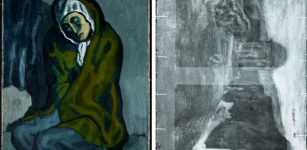 Hidden Details Discovered In Picasso’s Painting The Crouching Woman
Archaeology | Feb 28, 2018
Hidden Details Discovered In Picasso’s Painting The Crouching Woman
Archaeology | Feb 28, 2018 -
 Scythians Were Not Always Nomadic Warriors Of The Pontic Steppe In Black Sea Region
Archaeology | Mar 19, 2021
Scythians Were Not Always Nomadic Warriors Of The Pontic Steppe In Black Sea Region
Archaeology | Mar 19, 2021 -
 Ancient DNA Solves The Mystery Of Mitochondrial Eve And Human Evolution?
Archaeology | Sep 21, 2022
Ancient DNA Solves The Mystery Of Mitochondrial Eve And Human Evolution?
Archaeology | Sep 21, 2022 -
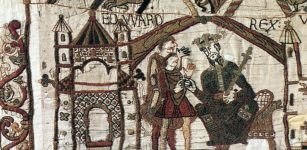 The Bayeux Tapestry: One Of The Great Historical Records Of The Middle Ages
Artifacts | Feb 29, 2016
The Bayeux Tapestry: One Of The Great Historical Records Of The Middle Ages
Artifacts | Feb 29, 2016 -
 5,000-Year-Old Tavern With Food Remains Discovered In The Ancient Mesopotamian City Lagash
Archaeology | Feb 2, 2023
5,000-Year-Old Tavern With Food Remains Discovered In The Ancient Mesopotamian City Lagash
Archaeology | Feb 2, 2023 -
 Unearthing Vadnagar And The Search For Hueng Tsang’s 10 Monasteries
Archaeology | Dec 11, 2015
Unearthing Vadnagar And The Search For Hueng Tsang’s 10 Monasteries
Archaeology | Dec 11, 2015

